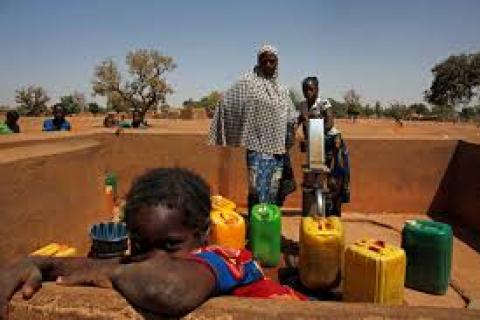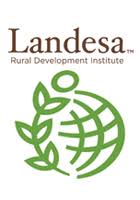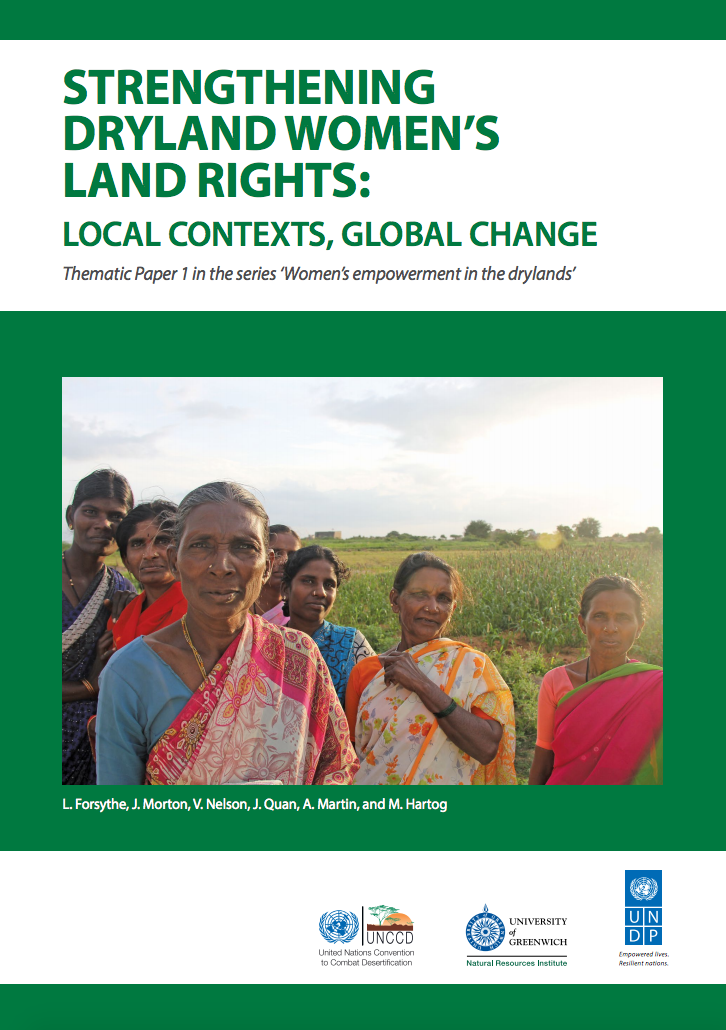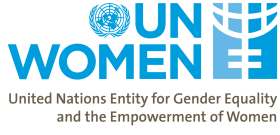
(a) Proportion of total agricultural population with ownership or secure rights over agricultural land, by sex; (b) share of women among owners or rights-bearers of agricultural land, by type of tenure
Last updated on 1 February 2022
This indicator is currently classified as Tier II. The Food and Agriculture Organization of the United Nations (FAO) is the main Custodian agency. UN Women, the United Nations Statistics Division, the World Bank, United Nations Environment Programme (UNEP), and UN-Habitat are partner agencies.
Unit of measure: Proportion of total agricultural population with ownership or secure tenure rights over agricultural land, by sex; share of women among owners or rights-bearers of agricultural land, by type of tenure
Why is this indicator important?
The empowerment of women and girls and the realization of gender equality are pivotal in achieving sustainable development, peace, food security, and other benefits for communities and societies at large. For rural women in particular, rights and access to land are needed to secure food and income for families, and to make women's voices count in community decision-making.
SDG indicator 5.a.1 monitors ownership and rights over agricultural land and is useful in profiling gender differences in agricultural land ownership and control in the sense of being able to sell or bequeath land, for example. As such, it allows to measure gender inequalities in agricultural land ownership and control. An increase in the percentage of women who own and/or control agricultural land indicates that progress is made towards achieving equal rights to land among men and women.
How is the indicator measured and monitored?
According to the metadata document, data collection draws on agricultural surveys and censuses or national household surveys. The indicator uses the agricultural population as a denominator with emphasis on the adult population living in households that have practiced agriculture over the last 12 months. This allows to capture agricultural households even if interviewed off-season. As of late 2021, ten countries have reported their official data on indicator 5.a.1.
In collaboration with UN-Habitat and the World Bank, FAO developed a joint methodology for the indicators 1.4.2 and 5.a.1 to facilitate efficient and cross-country comparable data collection. More information and additional data relating to indicator 5.a.1 such as the distribution of agricultural holders (by sex), distribution of agricultural land area owned (by sex), distribution of agricultural land value owned (by sex) is disseminated through FAO’s Gender and Land Rights Database. Disaggregated data by tenure type shall receive more attention in future reporting.
By Anne Hennings, peer-reviewed by Everlyne Nairesiae, GLII Coordinator at the Global Land Indicators Initiative (GLII) at GLTN, Un-Habitat and Clinton Omusula, Land Data and Knowledge Management Specialist at the Global Land Indicators Initiative (GLII) at GLTN, UN-Habitat and by FAO.
Official indicator data
The two sub-indicators measure how prevalent ownership or secure rights over agricultural land are in the reference population as well as the share of women among owners or rights-bearers. * Select "year" below to see the most recent data for more countries. ** To refresh the map with other official data, use the "Select an indicator" field. Type in the other indicators titles, as given in the table below.
Other related indicators on Land Portal
In addition to the official indicator data, the following indicators provide information concerning women’s tenure security, land rights, and access to land.
| Indicator | Min-Max Number of years |
Countries / Obs | Min / Max Value |
|---|---|---|---|
| Distribution of agricultural land area owned by sex (female - share%) | |||
| Formal recognition of women's right | |||
| Women's property rights are recorded (i) urban (ii) rural | |||
| 2016 - Women's property rights to land are equal to men's (i) in law and (ii) in practice |
It’s time to recognise the land rights gender deficit
The plight of women has largely been ignored, not only by local officials and lawmakers, but also by the way in which data about land rights is understood and processed
When Rajkumari Devi’s husband died 12 years ago, the world that centred on the mud hut they shared in a village in north India fell apart. Reeling from the loss of her husband, she was unable to secure title to her home and the scrap of farmland nearby that they had worked together.
Married women get nod to inherit their fathers’ land
A court ruling asserting that married women qualify to inherit properties of their fathers and should not be excluded during distribution has stirred debate between defenders of women’s and men’s rights.
The ruling was made by the Environment and Land Court in Nyeri, and stopped a woman from disinheriting her step-daughters. Justice Lucy Waithaka held that married daughters are also entitled to inherit their father’s estate, contrary to customary law and many traditions in the country.
7.5 billion and counting: How many humans can the Earth support?
Humans are the most populous large mammal on Earth today, and probably in all of geological history. This World Population Day, humans number in the vicinity of 7.5 to 7.6 billion individuals.
FAO addresses gender inequalities in Caribbean farming
The Caribbean appears to fare well in global gender statistics, with a high Gender Parity Index (GPI) and good rankings reported in the most recent World Economic Forum Global Gender Gap Report 2017. However, the picture changes considerably when taking a closer look at the rural economy, where agriculture continues to be the main contributor to people’s livelihoods.
Paginering
Women’s Land Rights Mapping in India in the Context of the SDGs
The study examined the status of women’s land rights in India, using Agricultural Census data, with state-wise and district-wise granularity and presents tables and maps depicting women’s land rights against indicators, further segregated across ethnicity and socio-economic categories.
WOMEN'S LAND RIGHTS GUIDES FOR DEVELOPMENT PRACTITIONERS
The Landesa Center for Women’s Land Rights has created four new practice guides, which are practical resources for development practitioners, researchers, lawyers, advocates, and scholars to assess the situation for women’s land rights in three countries: Kenya, Tanzania, and Uganda.
Strengthening Dryland Women's Land Rights
Land and land-based natural resources are the foundation of livelihoods for millions of people and are related to social, cultural and spiritual identity. This is particularly the case for drylands people, who, due to low and variable rainfall and water availability, have developed adaptive strategies in response to seasonal, climatic and environmental change.
Women and Sustainable Development Goals
On 25 September, the United Nations General Assembly adopted the 2030 Agenda for Sustainable Development as the agreed framework for international development. It is the successor to the Millennium Development Goals (MDGs).
Women and Land Rights
There is a direct relationship between women’s right to land, economic empowerment, food security and poverty reduction. A gender approach to land rights can enable shifts in gender power relations, and assure that all people, regardless of sex, benefit from, and are empowered by, development policies and practices to improve people’s rights to land.
Paginering
![]()

Undertake reforms to give women equal rights to economic resources, as well as access to ownership and control over land and other forms of property, financial services, inheritance and natural resources, in accordance with national laws
Indicator details
The indicator is conceptually clear, has an internationally established methodology and standards are available, but data is not regularly produced by countries.
Key dates:













